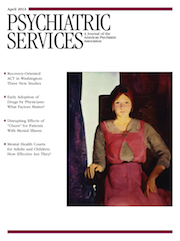Preventing Patient Suicide: Clinical Assessment and Management
Robert Simon and American Psychiatric Publishing have compiled Simon’s writings on suicide prevention with high heuristic value. All but three of the 13 chapters are previously published articles or chapters by Simon, which contributes to the major weakness of the book—it’s quite repetitive.
Each chapter in Preventing Patient Suicide is organized for easy learning. Chapters include tables and figures that capture the essence of the material quite well. Illustrative case examples are included that put a face on the clinical material. Each chapter concludes with a summary of the contents, and each chapter ends with “key clinical concepts” that are the chapter’s take-home messages. The key clinical concepts sections are filled with fundamental truisms we all tend to forget—for example, “The severity of suicide risk is dimensional and dynamic, constantly governed by changing risk and protective factors. Thus, suicide risk assessment is a process, not an event.”
The book is also filled with clinical pearls not included in the key clinical concepts sections, so skimming through the book for just the key clinical concepts deprives the reader of much practical information that can influence one’s practice. Simon stresses that the transition from chronic suicide risk to acute suicide risk can be “gradual and nuanced or alarmingly rapid.” He reminds us that the assessment of a guarded suicidal patient needs to include collateral contacts if possible. Simon points out that patients on one-to-one observation or 15-minute checks should not be discharged from these statuses but should be given a trial period after suicide precautions have been discontinued.
Simon has a humanistic view of doctors, nurses, and others who deal regularly with suicidal patients. He highlights that “Distinguishing suicidal patients whose improvement is illusory from patients who are actually improving is one of the most difficult evaluations that psychiatrists must undertake.” He recognizes that “high-volume admissions of acutely suicidal patients place a heavy burden on inpatient staffs.” And he admonishes the clinician to “not worry alone”—get a consultation.
Simon addresses the controversial “suicide prevention contract.” He reminds the reader that such contracts can never take the place of adequate suicide risk assessments and that one can never rely on such a contract with a new, unknown patient. And in much the same vein, he cautions against the use of unaided assessment forms and checklists.
Simon homes in on myths about suicide. Perhaps one of the more dangerous myths is that “passive suicide is a subset of suicidal ideation that is less severe and thus reflects a lower risk of suicide.” Much the same warning is provided for “fleeting” suicidal ideation.
Simon provides all manner of useful tips concerning risk management. One of particular note is his warning against using “true emergency” messages on an answering machine. Simon opines that this is “worse than useless; it is irrelevant and gratuitous.” And finally, “The royal road to therapeutic risk management passes through good patient care, not veering off into a detour of self-defeating defensive practices.”
So, first purchase this book. Second, keep it handy in your office. Don’t read it cover to cover, but read a chapter here and there. Consult this book when confronted by a suicidal patient. In fairly short order, your copy of Preventing Patient Suicide should be ragged and dog-eared from frequent use.



